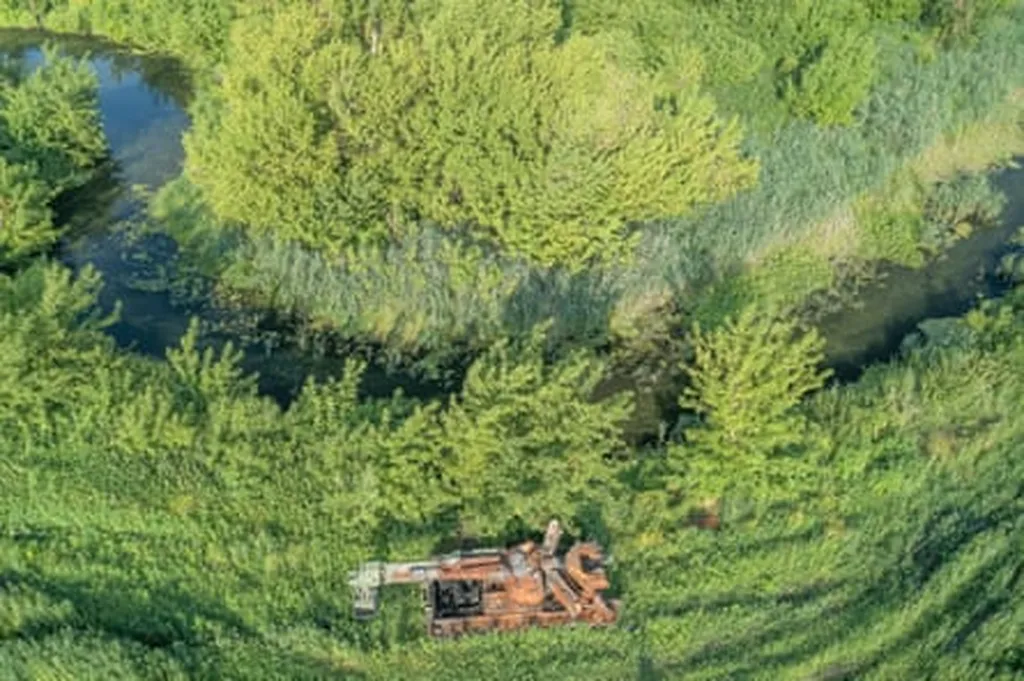Farming in South Korea is undergoing a quiet revolution, driven not by tractors or new seed varieties, but by drones. As rural communities grapple with an aging workforce and increasingly unpredictable weather, local governments are turning to unmanned aerial vehicles to fill labor gaps, protect crops, and even save lives.
In Jeongeup, North Jeolla, a team of young farmers has taken to the skies with drones equipped with thermal cameras and speakers, patrolling fields during peak heat hours to monitor older workers for signs of heat exhaustion. The initiative, running from late July through September, reflects a growing recognition that technology must compensate for the shrinking rural population. Choi Hyeon-seung, a 26-year-old member of the patrol team, explained that many farmers—often working alone—don’t realize how long they’ve been exposed to extreme temperatures. “When they hear the warning from the drone, most stop working,” he said. If the drone’s thermal imaging detects abnormal body heat or a collapsed figure, the team alerts emergency services.
The need for such measures is clear. Climate change has intensified heatwaves, and with fewer young people staying in rural areas, the burden on older farmers has grown. Jeongeup officials emphasize that drones can reach remote or obscured areas where a collapsed worker might otherwise go unnoticed for hours. “As extreme heat days increase, digital technologies will play a bigger role in disaster response,” said Lee Hwa-jeong, a local government official.
But drones in Korean agriculture aren’t just about safety—they’re also about protecting crops from persistent threats. In South Chungcheong, researchers at the provincial agricultural center have developed a drone designed to repel sparrows, a major pest for rice farmers. Traditional deterrents like scarecrows, reflective tape, and even firecrackers have proven inconsistent, but this drone emits high-frequency noise—inaudible to humans but highly disruptive to birds—over a 10-kilometer radius. During a test flight in early August, the drone autonomously patrolled fields, returning to recharge when its battery ran low, all controlled via a mobile app.
For farmers, the psychological relief may be as significant as the practical benefits. “Sparrow invasions cause immense stress,” said Yoon Yeo-tae, a rice research team leader. “This drone could reduce both crop damage and the mental strain on farmers.” The catch? At over 30 million won ($22,000), the device is currently priced beyond the reach of most individual farmers, though local governments may adopt it for shared use.
Other regions are exploring drones for pest control in different ways. In Dangjin, South Chungcheong, officials plan to use them to eliminate hornets—a growing menace to beekeeping operations—by firing corn starch projectiles to puncture nests before spraying insecticide inside. Meanwhile, in Gimcheon, North Gyeongsang, drones have already replaced manual pesticide spraying across 2,300 hectares of rice paddies, completing the work ten times faster. Jincheon County has similarly adopted drones and unmanned helicopters for large-scale pest control, addressing labor shortages that have worsened as rural populations age.
The shift toward drone-dependent farming isn’t just about efficiency; it’s a necessity. With fewer hands available to till, spray, and harvest, automation offers a way forward. Yang Myong-kyoon, a professor of bio-industrial mechanical engineering at Chonbuk National University, suggests that wider adoption could be achieved through rental programs, similar to how farmers currently share expensive machinery. “If drones were as accessible as tractors, their use would expand rapidly,” he said.
What’s unfolding in Korea’s countryside is more than a technological upgrade—it’s a redefinition of how farming can sustain itself in an era of demographic decline and climate pressure. Drones won’t replace farmers, but they may well keep them working—and safe—for years to come.

